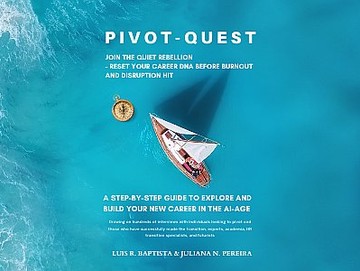And how they leveraged their success to up their game
By Leigh Shine

With writers like E. L. James and Hugh Howey on the market showing astonishing self-publishing success, writers are asking what their best option is. Obviously self-publishing, and the immediacy of digital publishing are appealing, especially in the light of such standout successes, but traditional publishing and the call of the Big Five still has a large hold on the market. So how does one choose?
First it is worth looking at who has become so popular with self-publishing. E. L. James, now a multi-millionaire was undoubtedly one of the most successful authors in the past decade. She published a longer, erotic romance inspired by the popular Twilight fantasy series.
The Rise of E. L. James
E. L. James is one of a whole generation of writers who had their start on Fanfiction.net. She gathered a humongous following on the site as she serialized and published the Twilight fanfiction that would become Fifty Shades. Fanfiction.net allows readers to follow stories and/or authors, as well as comment on stories, allowing for more direct contact between authors and readers, and a community that serves as both audience and beta readers. At last count, James had over 37k reviews on the fanfiction version Master of the Universe. With the immense popularity of her fanfiction, James realized the potential for her original plot, and changed the names before publishing it all on her own website. Soon she partnered with Writer’s Coffee Shop in Australia and took the story offline in order to publish it as an ebook and on-demand print. Her following brought her fantastic sales, numbering over 250,000 before Random House bought the rights through their Vintage imprint.
E. L. James’ series has two things that helped immensely when she self-published: the first being that Fifty Shades is a genre that is by far the most successful in the self-publishing world. Romance. Mark Coker mentions in his Smashwords 2016 book publishing predictions, that “Romance readers tend to be power readers,” and it shows in the numbers. She also came into the practice with a huge online following: it was her popularity and feedback on Fanfiction.net that influenced her to believe in the potential of her story as a standalone work, and she kept those readers and fanbase going into the endeavor.
Hugh Howey’s independent path
Hugh Howey started his own Silo series with a short story (Wool) that captured the hearts and imaginations of many: by then he had been a published author (first traditionally, and then self-publishing all of his other books) for years, and had a backlog of stories already available to readers. This is something to which he has ascribed much of his success: having writing out there that readers, once finding something they like from an author, can readily access. This is especially easy with ebooks, which have lower prices and easy online reading, whereas physical books require a trek to a book store or the wait for Amazon shipping. Once his story Wool caught fire, gaining a thousand, and then multiple thousand, and more, sales a month, the rest of his portfolio enjoyed further attention. He began making enough money through his ebooks that he refused to sign over digital rights for his books, notably turning down seven figure offers from other publishers before signing with Simon & Schuster in 2012 to pursue more physical and international sales.
These two major success stories of self-publishing have important things in common, besides ultimately intriguing stories. Both authors started writing and publishing first and foremost for themselves: they wrote stories that they believed in, regardless of how well it fit into the current market, because they were books that they wished existed. It is a common bit of advice for writers to “write for yourself” but in looking towards traditional publishing this may actually work against getting published: the big publishers must obey the markets. They invest too much money into their publications to take unnecessary risks. The staff at selfpublishingrelief.comgoes so far to encourage self-publishing for niche genre writers, citing the fact that not only will you ensure your own publication, but your competition will be small if existent, and larger shares of what profits docome will end up in the author’s pocket.
Secondly, they both built up a body of work before they “made it big” that gave them more material to work with once noticed, but more importantly gave them more outlets to connect with readers, and for readers to connect with them. Thirdly and most importantly, I believe, they also both write fantastical stories.
I do not intend to equate Romance with fantasy, but it’s impossible to ignore that Fifty Shades started out inspired by, and imitating of, a breakout urban fantasy series. Similar to fantasy, both these authors write in longer format, and carry characters and worlds with them through long books. Science Fiction/Fantasy genres are easily the most successful after Romance in indie book sales according to Beth Kelly Sargent from Publisher’s Weekly. This could be attributed to many factors, but for ebooks especially, likely is the result of longer books (and bigger bang for the buck).
The success of these two authors wouldn’t have happened were they to go through traditional publishing routes. Due to traditional publishers being first and foremost businesses, they probably wouldn’t have gotten published in the first place (at least in E. L. James’ case) due to the incredible risk publishers would have seen in their unique stories. It is rare that a publisher will choose something in a niche genre, or something they don’t foresee selling well immediately. Also among first-time authors, it is highly discouraged to try and publish series: a huge barrier for many fantasy writers: there is no guarantee that first book will sell well, and publishing houses are understandably unwilling to risk signing a multi-book deal. This is just another reason that self-publishing may be the way to go for new writers, especially in the fantasy/science fiction genres, where they can publish their works and get reader feedback immediately, instead of going through passages where they may not get published at all.
There is no complete replacement for traditional publishing: and we don’t need one. While self-publishing may work fantastically, and in the long run does better for many authors, who get greater profit shares and who in certain genres dominate the market, there is little competition when it comes to print books. Self-published works are much rarer in brick-and-mortar stores and especially for genres like Crime and Mystery, literary fiction, and most educational texts, traditional publishing can be better all around.

